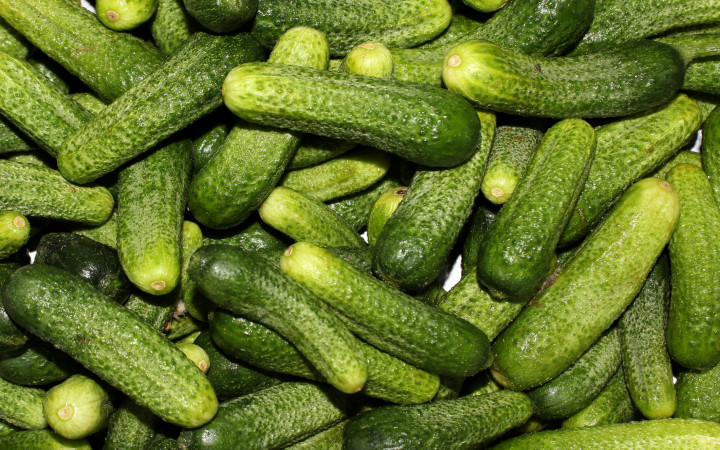Today’s Wonder of the Day was inspired by Carter. Carter Wonders, “how are pickles made” Thanks for WONDERing with us, Carter!
How do you build the perfect cheeseburger? You might start with a big piece of juicy beef on a warm sesame-seed bun. Then come the toppings: cheese, ketchup, mustard, mayonnaise, lettuce, tomato, and onions. Many of you may be thinking we’re forgetting the best one. What are we talking about? Pickles, of course!
Pickles add just the right amount of spice and sour flavor to a cheeseburger. Of course, they’re also great on many deli sandwiches. Even chicken sandwiches benefit from pickles these days.
Have you ever WONDERed where pickles come from, though? Think about it for a second. Do they grow on pickle trees? Have you ever seen a pickle bush? Do farmers harvest a giant field full of pickles every fall?
Nope! As some Wonder Friends may already know, pickles are actually cucumbers. They’ve been preserved in a special solution (called brine). The brine is made of vinegar, salt, and special seasonings.
Mmm! Pickles sound great, don’t they? Some of you may be thinking, “Ewww! Gross!” But don’t let the process fool you. The results are delicious. That’s why pickles are so popular. Experts say people around the world eat five million pounds of pickles every day!
If the process of making pickles sounds difficult, don’t worry. With some practice, anyone can do it. Pickling has actually been around since ancient times. The first pickles were probably made over 2,000 years ago in Mesopotamia from cucumbers native to India.
Today, pickling has become more automated. New technology and special machines let companies make more pickles than ever before. The basic method, though, has changed very little over the years.
The primary ingredient in pickles is cucumbers. Acetic acid, or vinegar, is added to the cucumbers. After water, vinegar makes up most of the pickle juice. It also adds to the pickles’ sour taste. Many people add sugar or artificial sweeteners as well. These offset some of the sour taste from the vinegar. Salt is also added for more flavor.
Over time, the cucumbers turn into pickles. The other ingredients make up the juice in which the pickles are stored. Particular types of pickles usually have other ingredients added. Some popular examples include dill weed (for dill pickles), allspice, cinnamon, cloves, black pepper, and garlic. Finally, colorants, preservatives, and stabilizers are often added. These can lengthen shelf life and increase consistency across batches.
Do you enjoy pickles? Many kids love their crunch and flavor! The next time you take a bite out of a pickle, remember you’re enjoying a snack that’s been around for a really long time!
Standards: CCRA.L.3, CCRA.L.6, CCRA.R.1, CCRA.R.2, CCRA.R.4, CCRA.R.10, CCRA.SL.1




